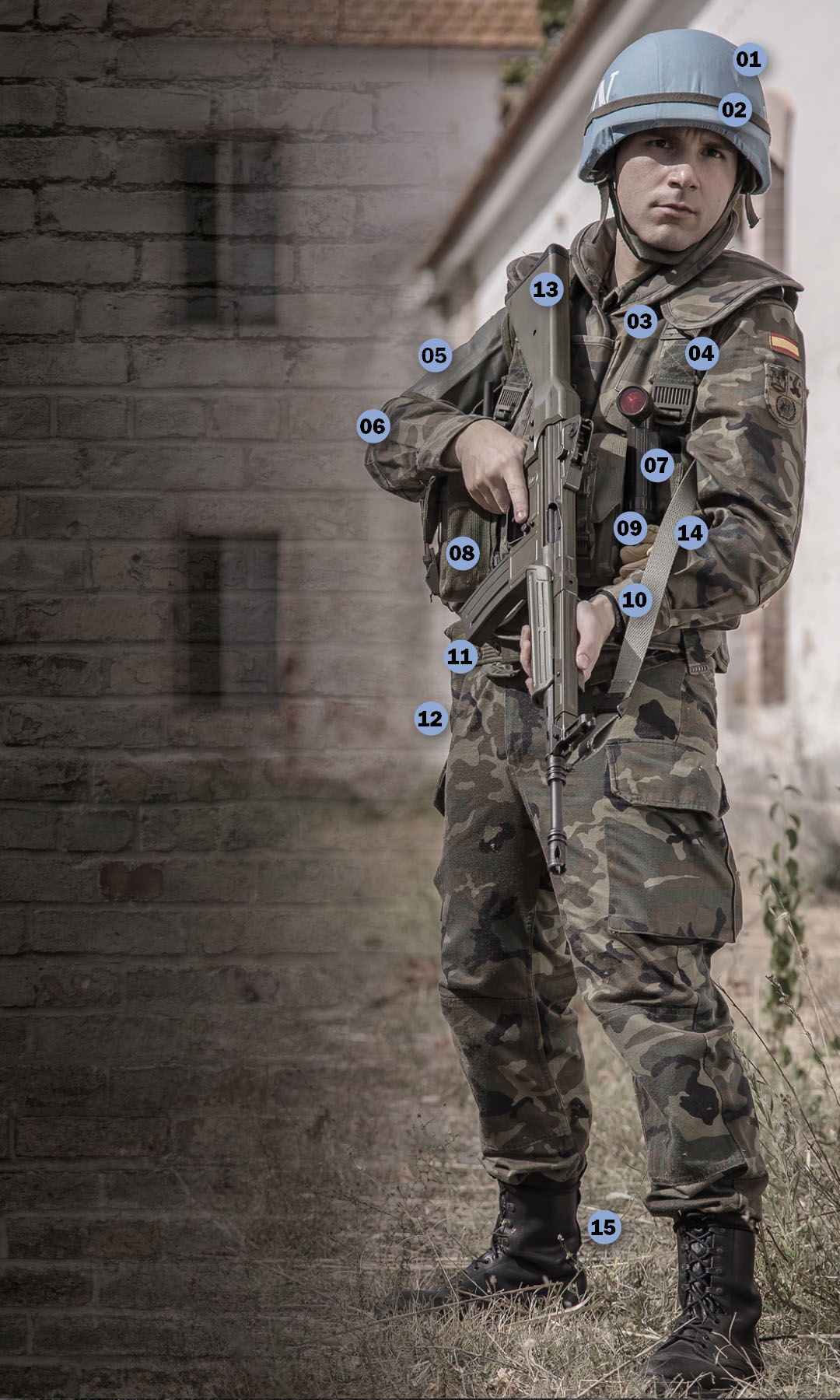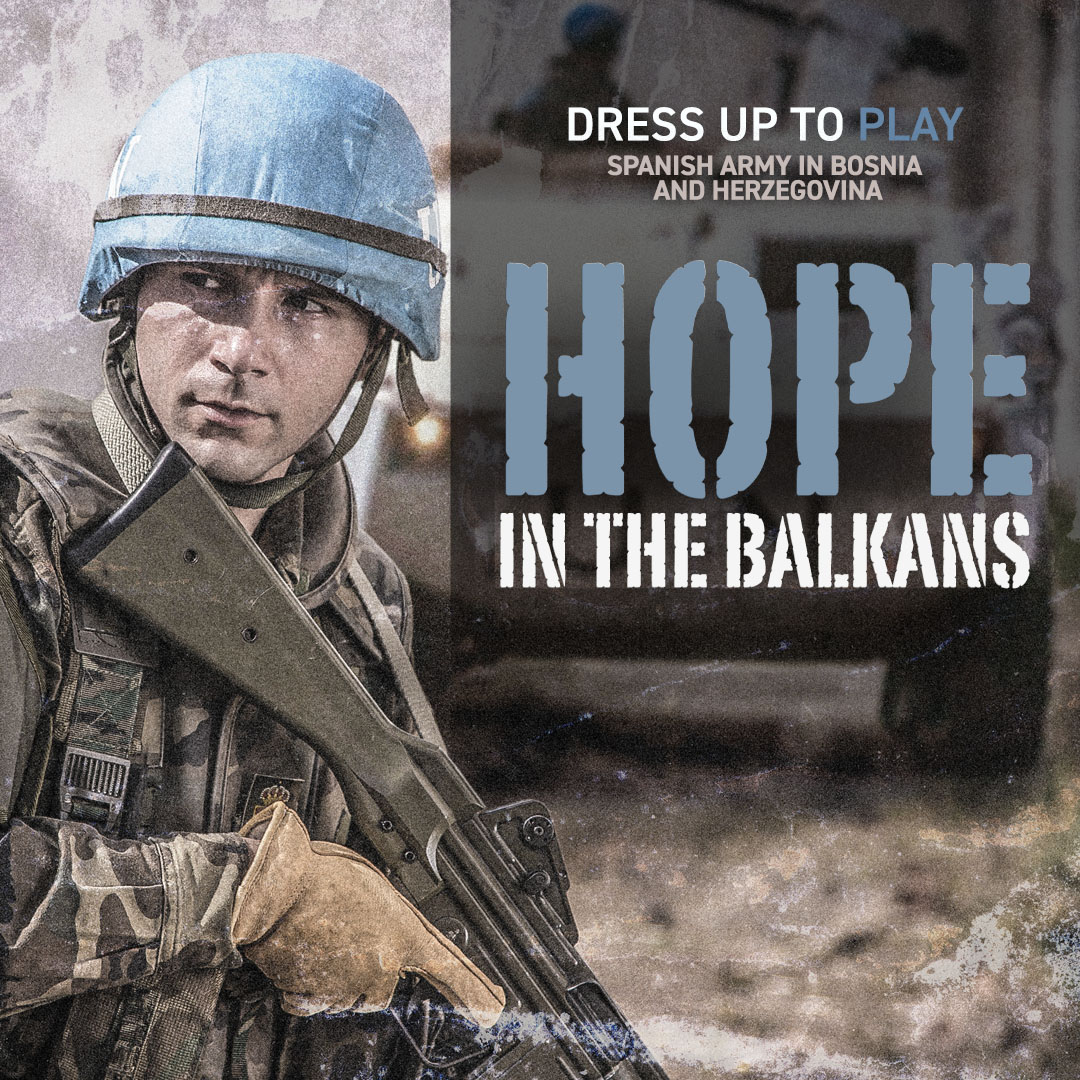

HOPE IN THE BALKANS
Sieges, snipers, ethnic cleansing, concentration camps, refugees. The Bosnia-Herzegovina of the early 90s was an open wound in the heart of old Europe. News outlets from half the world broadcaster the cruelty of the war in the former Yugoslavia. When the figures approached 10,000 dead (including 1,500 children) and 50,000 injured by bullets and shrapnel, the United Nations Protection Force decided to take action. Spain had a new mission: RESTORING PEACE.





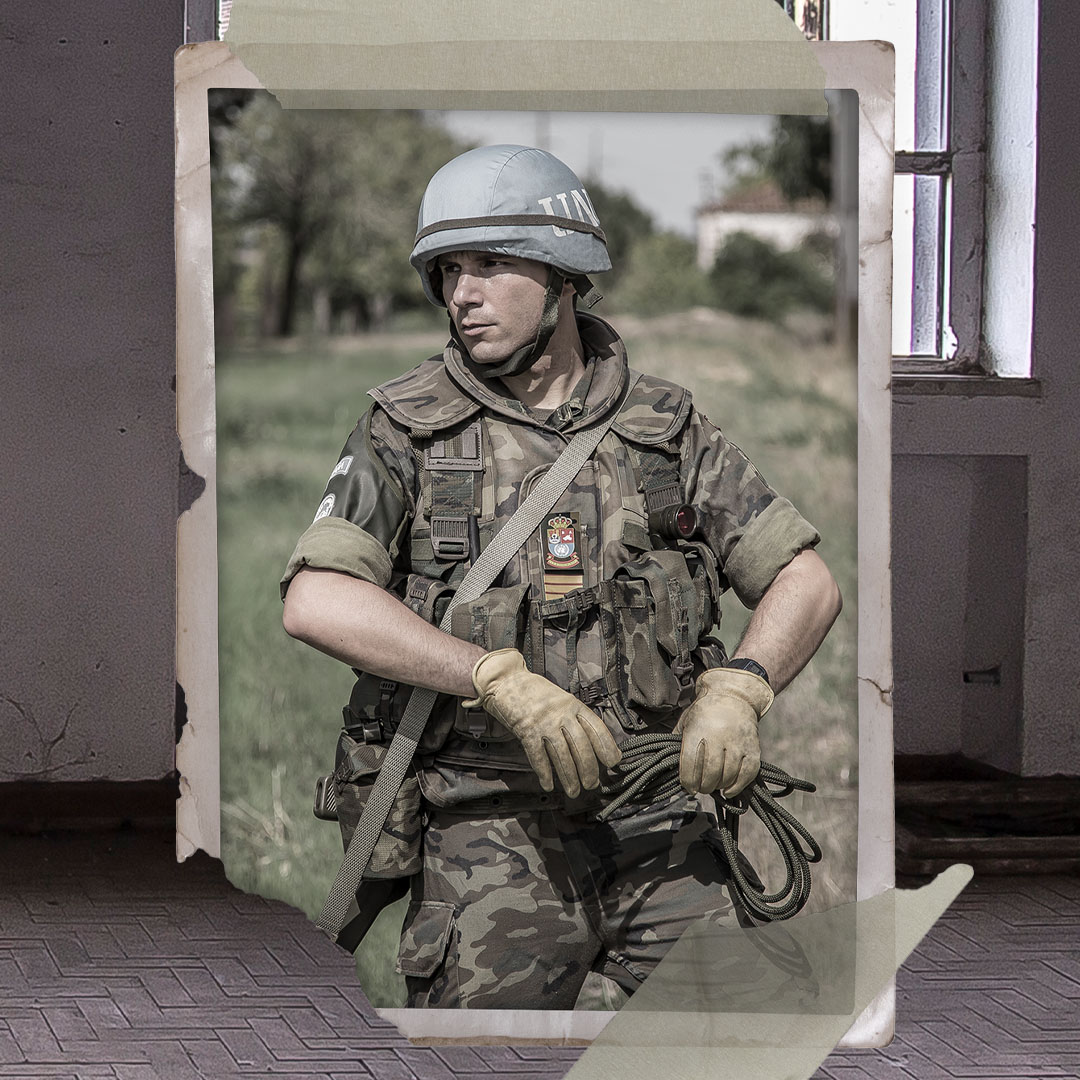
Context
The image of the Blue Helmets in Bosnia-Herzegovina is an icon of the military history of our country. It was the first Spanish humanitarian mission that took place in Europe. Their main objective was to secure the Neretva Valley. A hot spot in which Serbs, Croatians and Muslims were playing a dangerous tug of war that was about to snap. And right in the centre, its capital: Mostar.
An urban trap for any peacekeeping force, where the threat of snipers on one side or the other was constant. Spanish troops navigated these debris-strewn avenues, riding their BMR-600s and Cavalry Exploration Vehicles, to ensure the safety of the civilian population. Faithful rides that were painted white for that peace mission.
Outside the city, the tension was just as high. The Spanish blue helmets supervised the ceasefire between the contenders and escorted risky convoys of medicine and supplies. Miles and miles of steep, half-paved tracks that cut through the valley, the perfect spot for ambushes and accidents.
The recreation that illustrates these pages is situated in this context. This is a sergeant of the Spanish Army, deployed in the Extremadura Tactical Group, between October 1994 and April 1995.
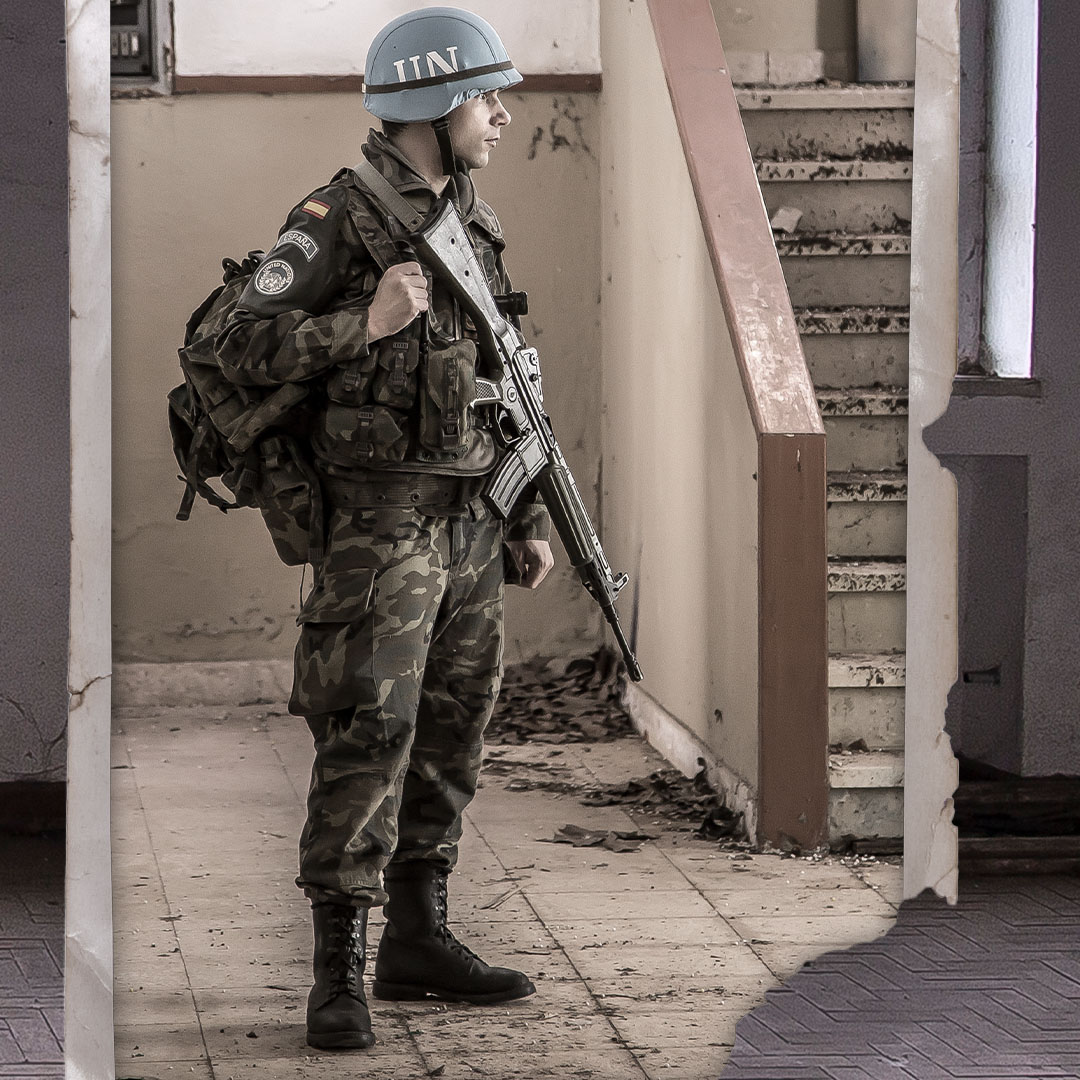
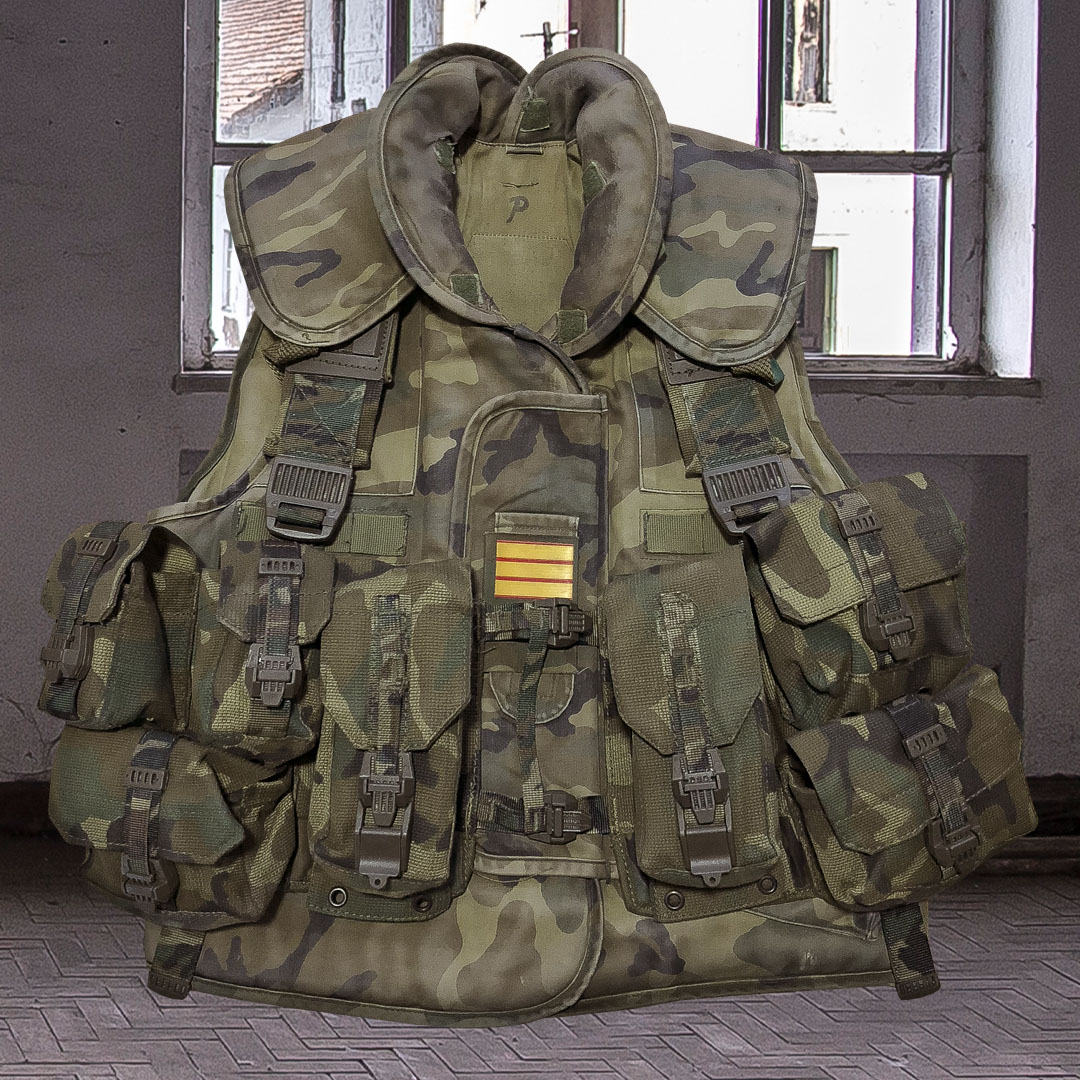
Equipment
UNIFORM
The image of the Spanish soldier in the 90s is linked to that of the NATO camouflage uniform. Its camouflage pattern, inspired by the American ERDL, reminds us that not long ago military service existed in Spain. Witness of a thousand maneuvers and a thousand anecdotes along with his inseparable regulatory boots (made in this case by Iturri).
PROTECTION
During the 90s, Spain was a pioneer in Europe in the manufacture of aramid fibre helmets. The Marte helmet, developed by Induyco, was at the same level as the American PASGT. During the deployment of the AGT-Extremadura, the Mars 02/89 was used with the characteristic sky-blue cover of the United Nations.
Besides the helmet, the only impact protection available to the Spanish soldier was the heavy anti-fragment vest. Influenced by the American PASGT model, it was made by the national companies Induyco and Fecsa. It is worth highlighting the presence of two series of strips at chest height, very similar to the MOLLE system, which our operatives used to hang items such as the elbow flashlight.
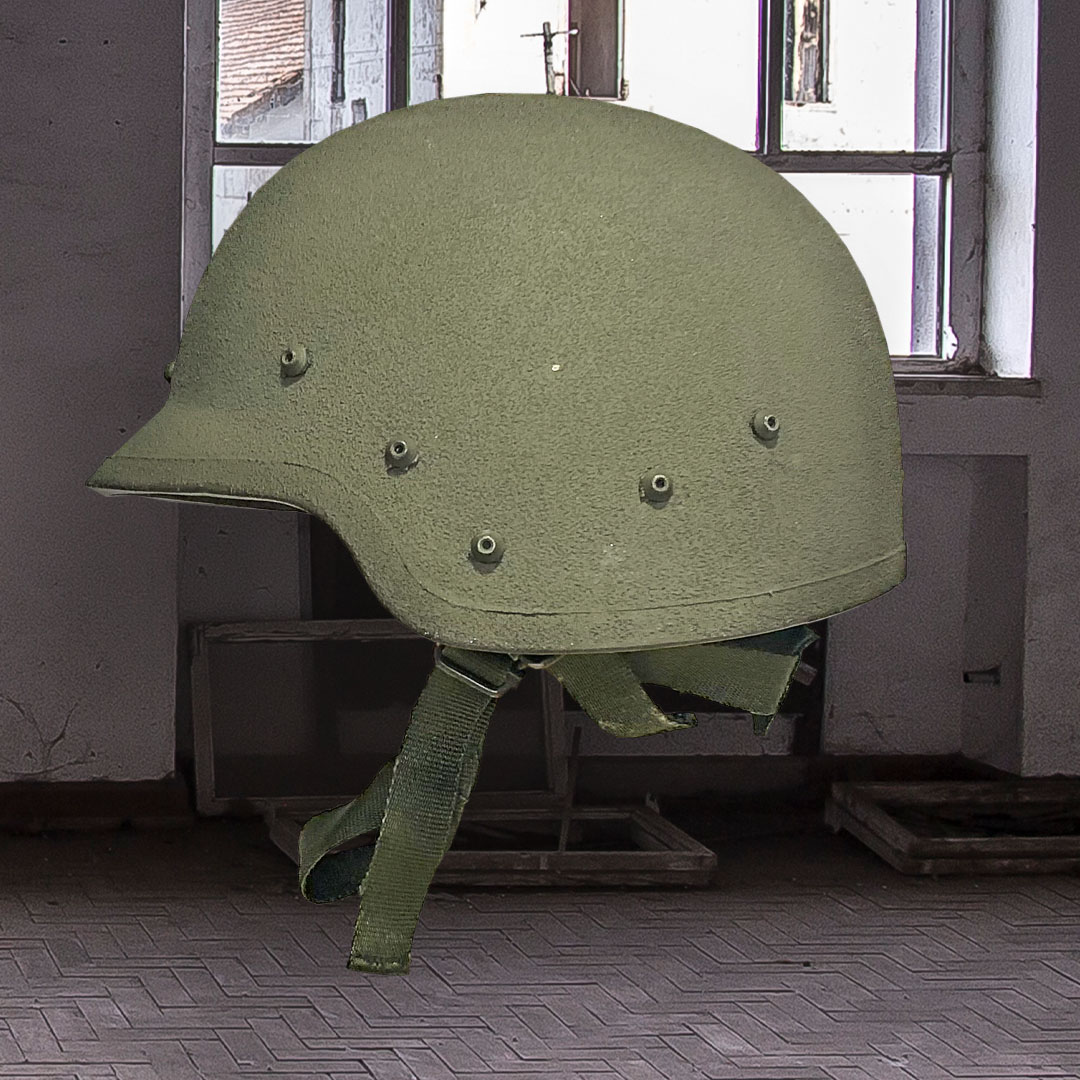
GEAR CARRIERS
In the 1990s, the harness or suspender systems (such as Alice’s) still survived in the armies of the Northern Alliance. Spain, however, opted for a lightweight and camouflaged combat equipment carrier (PECO). It consisted of two double magazine holders for CETME L, two grenade holders and three multi-purpose pockets. All of them with a quick and silent opening system, thanks to the system that is known today as “Spanish-tab”. A set that was completed with the Light Combat Backpack and the Army girdle, from which the supply canteen used to hang.
JAPANESE TECHNOLOGY
We are in 1994 and if you need to know what the time is, you will very likely be wearing the mythical and indestructible Casio F91w on your wrist. This small and affordable Japanese watch was a soldier's best friend before the G-Shock range became popular.
It is clear that the Japanese were experts in miniaturization. During their stay in Bosnia, some Spaniards used the “small” Yaesu FT-23R station for intra-squad communications. Much more comfortable and manageable than the BCC Racal-349 or the heavy and bulky PRC-77.
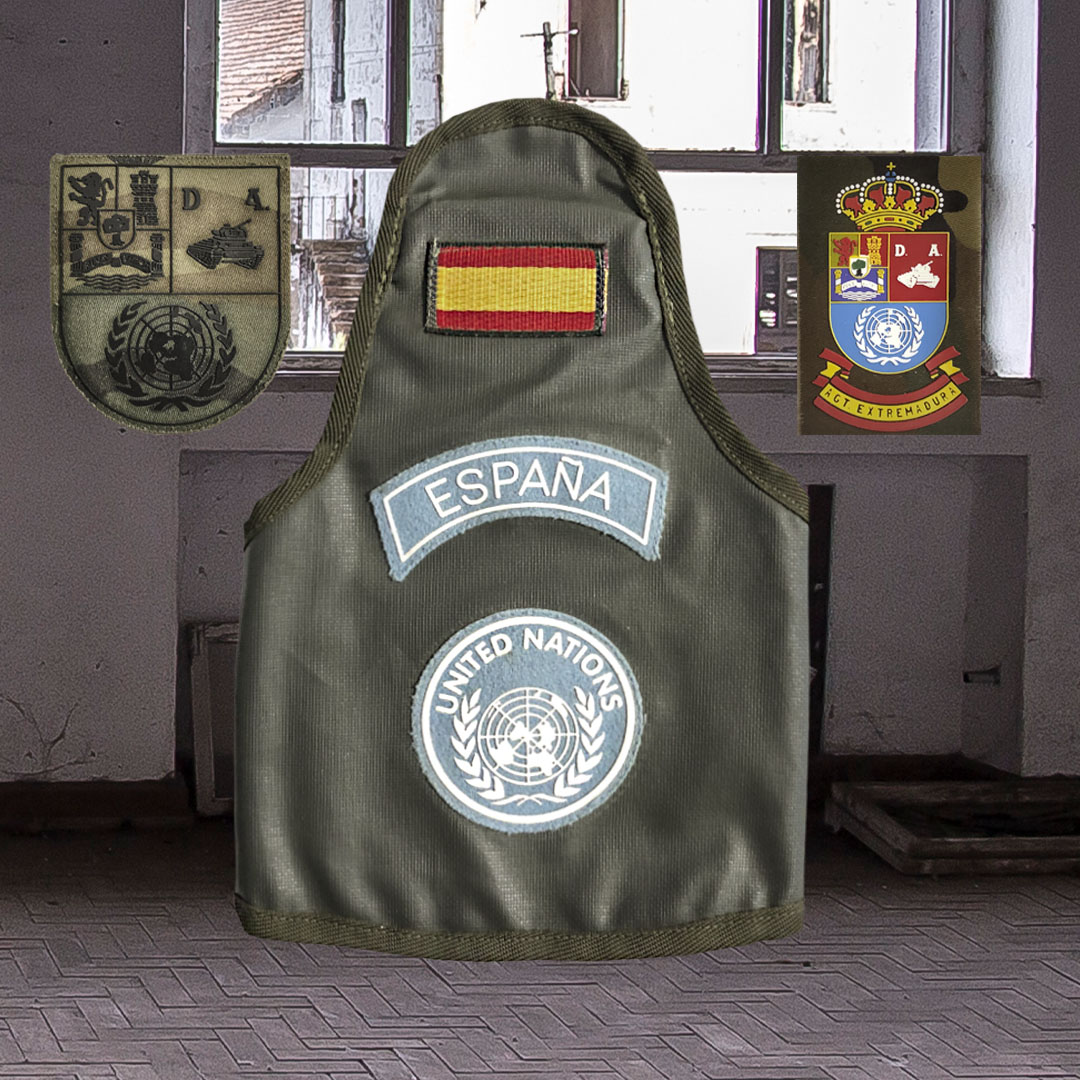

THE CHILDREN OF BOSNIA
The inhabitants of Bosnia, in their attempt to gain access to the distribution points for medicine and food, suffered abuses (sometimes caused by militiamen who would kill unarmed civilians for “fun”). Many children died in the Neretva Valley for this reason. To prevent this, the United Nations designed a reflective retro-reflector, which would be given to the children together with the emergency rations.
A cute little bear in a uniform, blue UN beret and UNPF badge. When hanging it to the side of the waist, the bear oscillated back and forth, allowing the child to be seen even with his back turned.
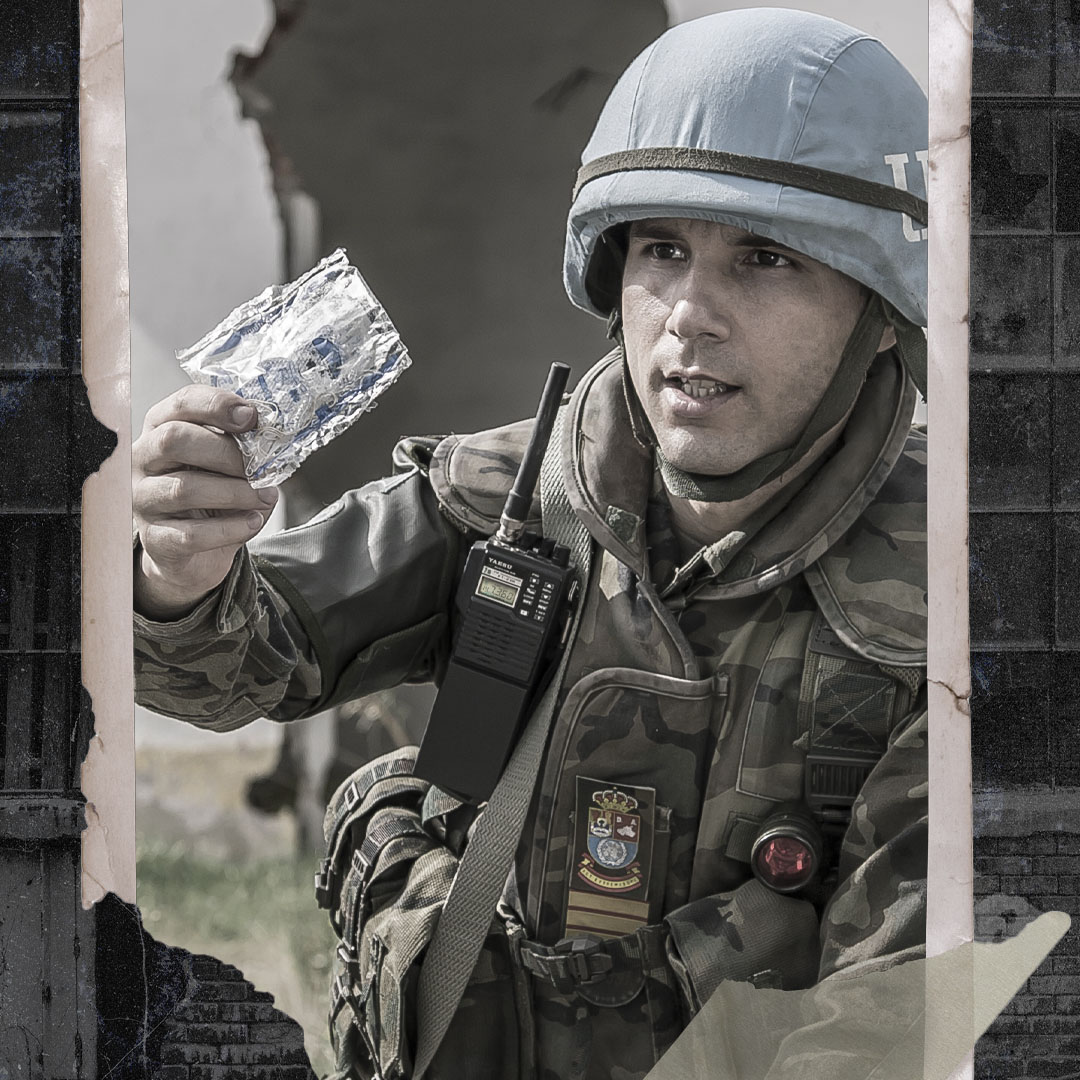

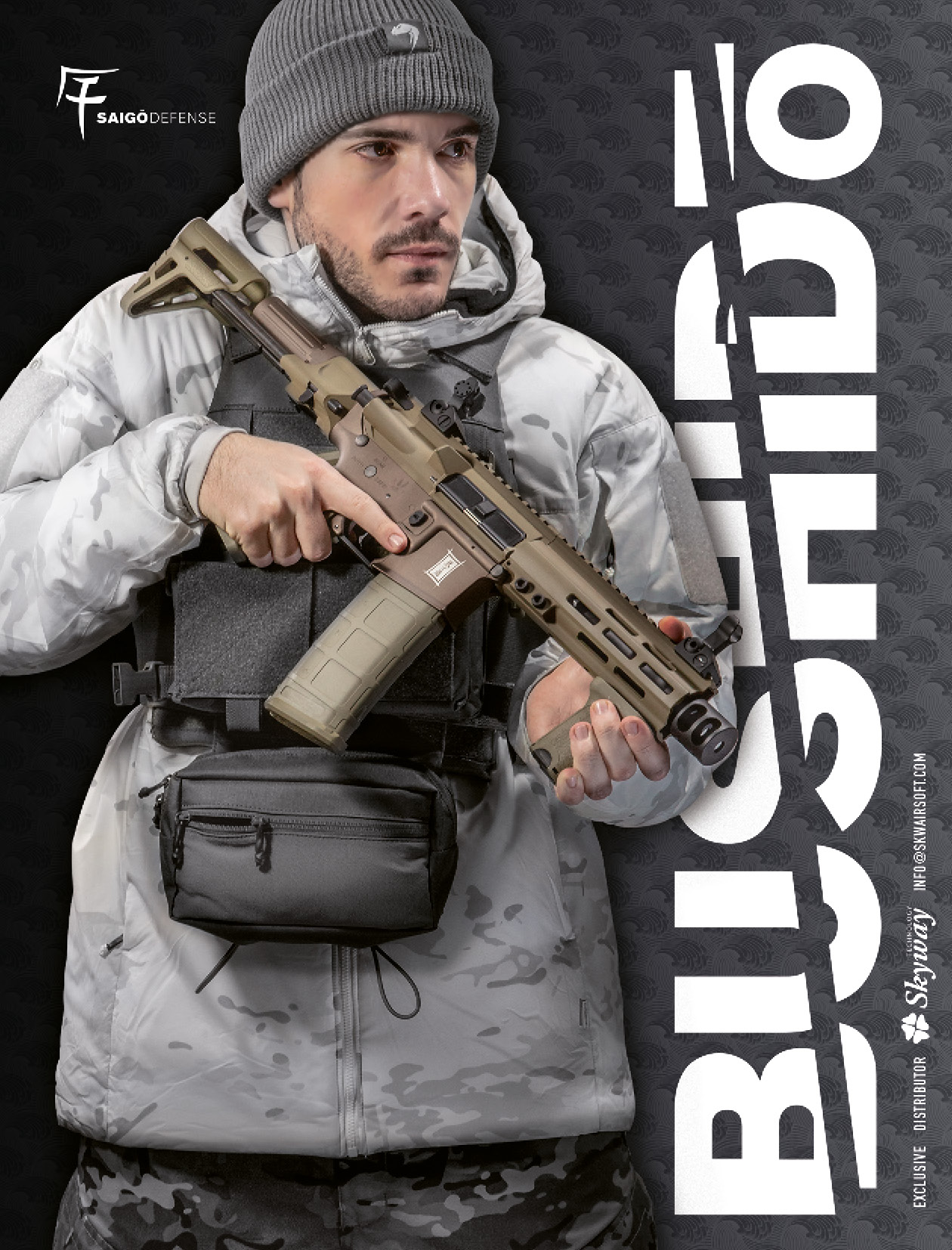
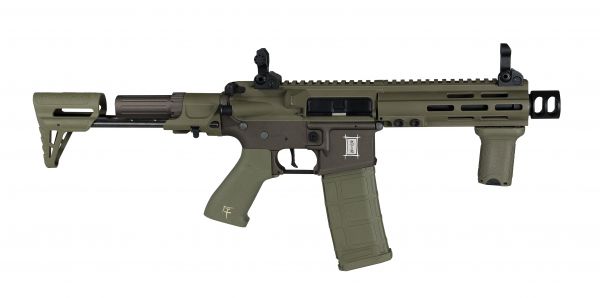 |

IN REMEMBRANCE
23 Spanish soldiers and an interpreter lost their lives in Bosnia-Herzegovina. The following words by Arturo Pérez-Reverte pay tribute to them and their colleagues who managed to return:
“They are the only ones who wash, every day, with their work the shame of an old and selfish Europe that did not know or could not or did not want to stop this war in time."
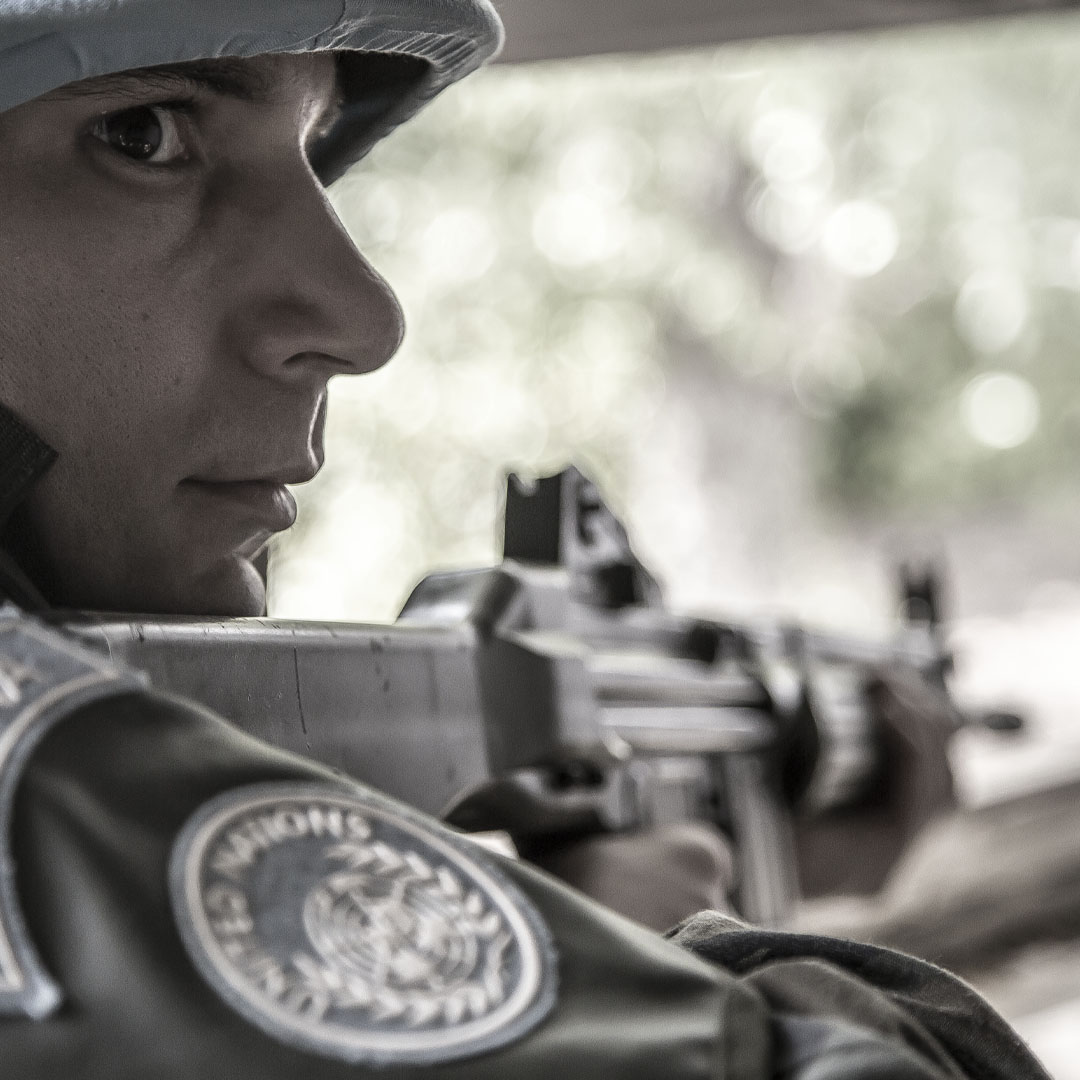
Weapons
The CETME model L was the main assault rifle of the Spanish Armed Forces during the 90s. It was an evolution of the CETME C to fit the standard NATO cartridge: the 5.56x45. To maximize compatibility with other Northern Alliance armies, the sheath was adapted to accommodate STANAG magazines (used by the AR15, L85, FNC, etc. platforms).
In addition to the standard model, the Armed Forces had the LC (Short Light) model with retractable stock and the LV (Light with Visor) model that used to mount ENOSA or SUSAT optics. Unfortunately, no Airsoft brand has yet chosen to manufacture a replica of this rifle.
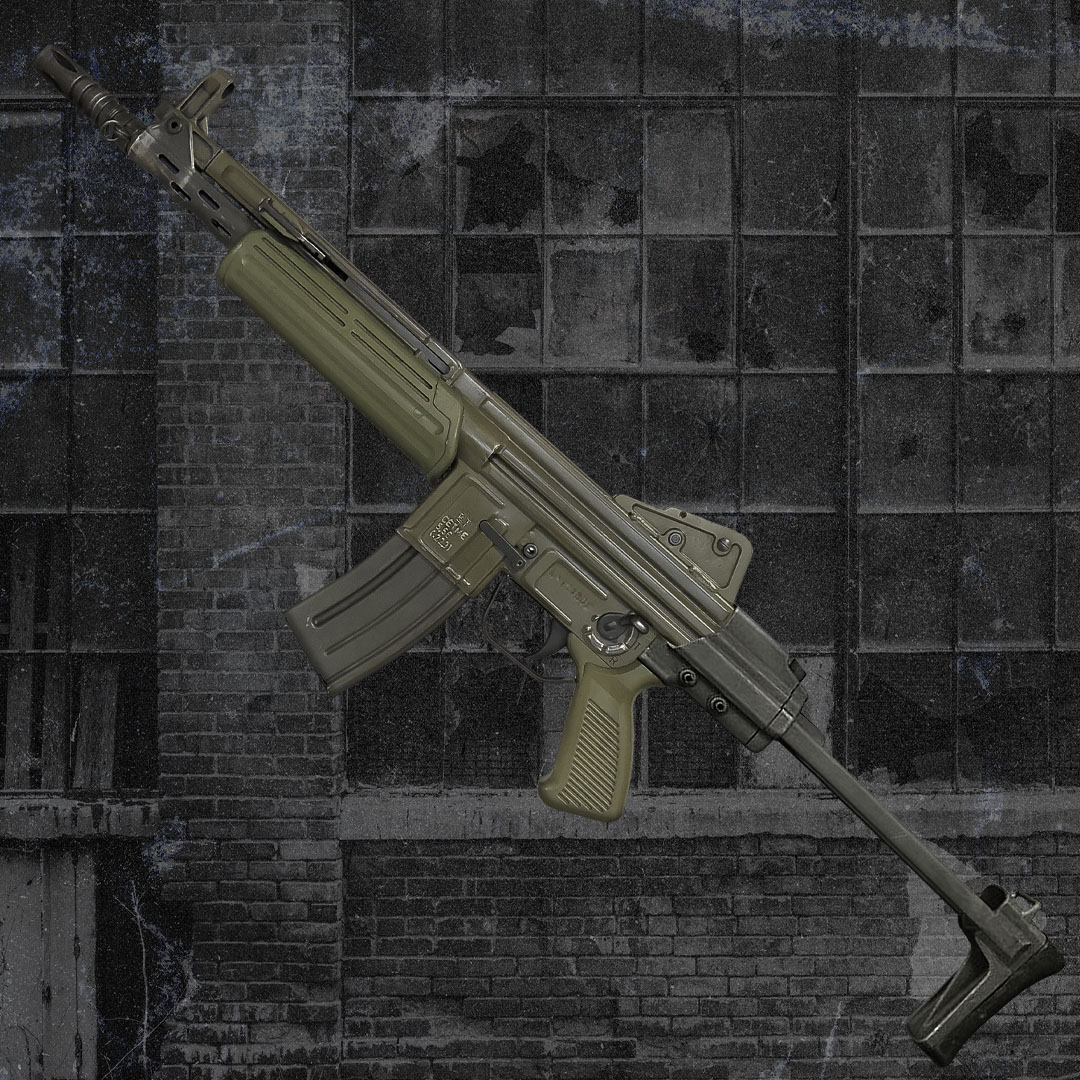
THE SPANISH FLAG ON THE STOCK OF A CETME?
Contrary to what happens in most missions, the role of the Spanish Armed Forces in Bosnia-Herzegovina was to stand out. Their white vehicles and their blue helmets were joined by the ingenuity of some soldiers who, with red insulating tape and yellow seal, customized the stock of their CETME L with the colours of their national flag.
It was unusual, but it was clever: a way of warning the Muslim and Croatian militias that those soldiers were Spanish. This prevented situations such as those in Sarajevo, in which French peacekeepers were shot in revenge for a disproportionate performance by Ukrainian peacekeepers.

01. Mars 02/89 helmet with UNPROFOR cover
02. Cat eyes
03. Army Antifragment Vest
04. 2nd Gen PECO CETME L (NATO camouflage)
05. United Nations bracelet
06. Army uniform (NATO camouflage)
07. Army elbow flashlight
08. Yaesu FT-23R radio
09. Work gloves
10. Casio F91w (black) watch
11. Girdle Army (camouflaged NATO)
12. Regulatory canteen case
13. Santa Bárbara CETME L
14. CETME holder strap
15. Iturri regulatory boots
